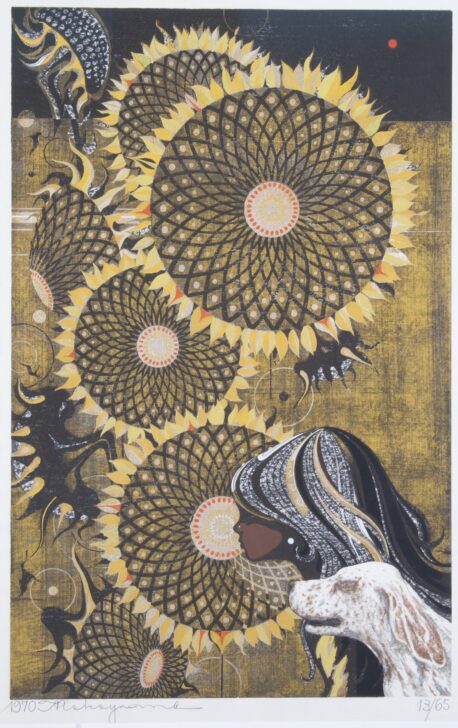Gogo no shojo (Girl in the Afternoon)
Nakayama Tadashi

Description
Subject Matter:
Nakayama’s works can be divided into three periods; the first (early) period from 1955-1964, the second (middle) period from 1965-1968, and the third (late) period from 1969 to his last painting. In the first period, the common theme is horses. Moreover, he began experimenting with portraying girls, although the girls aren’t as developed and controlled as in later periods. He began portraying butterflies of different colors and sizes, he experimented with architecture, and he painted in most brown and green shades. The second period, he developed a new theme where he started portraying the horses with flowers, mostly pansies and poppies, and butterflies. The background colors also became lighter than in the first period. During this period he became more comfortable and controlled with his work; there is greater depth and motion on the page. In the third period, the subject of the prints mostly portrays a girl and he starts to use more complicated patterns and colors. He also gained a greater mastery over showing perspective.
Physical Description:
A girl with her head and body in profile, her head stretched in front of her body. Her black hair is highlighted with white, brown, and gold strands. She is wearing black and gold clothing and a white dog is beside her. Surrounding them are many sunflowers against a gold background.
Usage Rights:
If you are interested in using an image for a publication, please visit https://umma.umich.edu/request-image/ for more information and to fill out the online Image Rights and Reproductions Request Form.